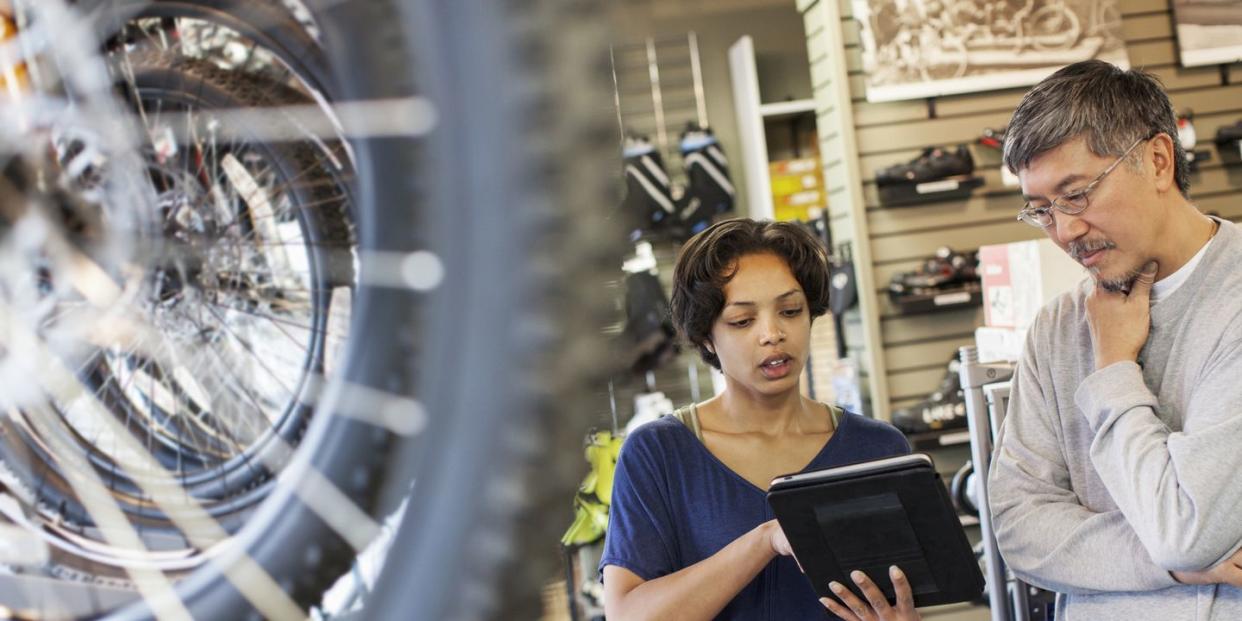New Report Shows Just How Big the Pandemic Bike Boom Actually Was

A recently released report from the Bureau of Transportation Statistics shows that spending on bikes and bike accessories rose by a whopping 620% between 2020 and 2023. While we knew the number was going to be high, we weren't expecting it to be that high.
According to the report, which was released to coincide with Bike to Work Week, national spending on bikes and bike parts had been slowly increasing from 2002 until early 2023.
The demand for bikes and bike parts rose sharply in March 2020, as countless Americans took to biking during the pandemic. In just a few months that year, monthly spending on bikes and accessories rose from around $6 billion per month to over $8 billion per month.
Some studies estimated that upwards of 10% of Americans engaged with bicycling in a new way during that time. That’s nearly thirty-three million Americans, many of whom were in search of new bikes or needed parts to repair and rehab old ones. The rush led to a well-documented bicycle shortage around the world. Otherwise, these figures very well may have been exponentially higher.
The spending total spiked again the following year, with monthly spending rising to over $9 billion. That increase was likely due to the massive supply chain issues and bike shortages wrought by the sudden biking surge beginning to regulate. Bikes and parts were slowly but surely beginning to come back to stores, meaning people could continue to spend and spend more.
Over the last two years, monthly spending on bikes and accessories around the country has seemed to settle back at around $8 billion per month.
The report also highlighted that ridership on some of America’s largest bikeshare networks increased by 42% over that time period.
While the analysis shows that bikeshare trips with San Francisco’s Bay Wheels bikeshare system have dropped over time, trips on New York and New Jersey’s CitiBike system, Washington DC’s Capital Bikeshare system, Boston’s Blue Bike system, and Chicago’s Divvy system have all seen gradual increases from 2019 to today.
The amount of daily trips changed little between 2019 and 2020, likely due to work-from-home mandates during the earliest stages of the pandemic. As urban bikeshare systems are often used as a means of commuting, those would have accounted for a huge number of daily trips.
But in the warmer months of 2021 and 2022, bikeshare trips rose as people began returning to in-person work and tourism in major cities started to bounce back.
New York and New Jersey’s CitiBike hit a high in early fall of 2022, with around 3,500,000 monthly trips being taken. Similarly, Boston’s Blue Bikes peaked around the same time with nearly 500,000 trips.
And while data from 2023 remains to be seen, the Bureau of Transportation Statistics is confident that this could be another “banner year.”
Per the report, “total U.S. spending on bicycles and imports of bicycles remain at all time-high levels while ridership on docked bikeshare systems continues to grow.”
You Might Also Like

